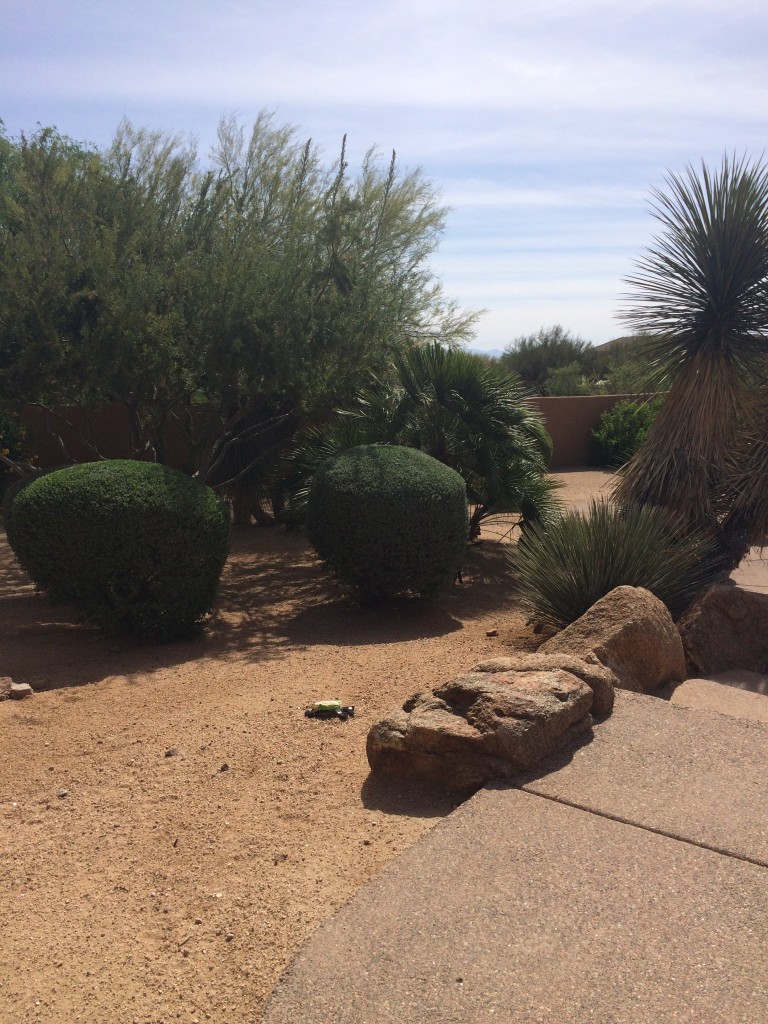Drought conditions throughout more than a third of the country have inspired us to write a series on how to create a drought-proof landscape. In areas of frequent and severe drought, Over the past few weeks ew have discussed removing your grass and making hardscaping the star of your landscape in its stead. Today, we continue the drought-proof landscape series by showing you how to choose low-water plants to enhance curb appeal.
Choosing Low-Water Plants
While many plants are unable to thrive under drought conditions, even many that are indigenous to the area, there are still a great number of plants that do quite well with minimal water. For others, there are strategies you can take to ensure they stay as healthy as possible. Utilizing low-water plants in your drought-proof landscape will give you the landscaping you want without the added stress of keeping plants alive. Let’s walk you through some of our favorite low-water plants and the proper ways to ensure survival in severe drought conditions.
Low-Water Plants
Many plants indigenous to dessert locations require very little water to thrive. These plants come in a wide range of sizes and can be used together to create beautiful landscapes. These plants come in many different colors and textures. Mix and match your favorites to create a multi-level arrangement packed with visual interest. In an effort to help homeowners landscape their homes while conserving water, the California Water Services has comprised a list of low-water plants that are recommended for the state of California and surrounding areas. Below is a sampling of some of our favorites.
|
|
Low-Water Trees
If you want to add a bit of privacy to your landscape, nothing works quite as well as a couple tall trees. Plant varieties that will look great, no matter how bad the drought conditions get. This list will help you choose just the right ones.
|
|
Tips for Maintaining Low-Water Plants
While each of the plants we have discussed, there is still some maintenance needed to keep them looking great. Even low-water plants require some water to thrive. Fortunately, there are measures that can be taken to minimize the water needed.
Plant Low-Water Plants in Planters
Planters help you not only elevate the height of plants and add visual interest, but they also help you ensure your plants are getting the nutrition they need. Fill these planters with rich planting soil and water it when needed. Because the soil is contained, you won’t loose water into the dry ground. It will go to nourishing the plants themselves.
Utilize Drip Irrigation Systems
Drip irrigation is increasingly popular in areas will little rainfall. This extremely efficient irrigation system places water only where it is needed. Instead of watering an entire lawn with mass quantities of water, drip irrigation systems place just the right amount of water right at the base of plants and trees.
Put Down the Hose
According to California Water Service, a hose uses up to 10 gallons of water per minute. When it comes time to water your plants, resist reaching for the hose and fill a watering can instead. You can see exactly how much water you are administering to your plant and consciously limit the number of gallons you use to water your plants. If you must use a hose, add a low-flow hose nozzle to minimize the water usage as much as possible.
Coming Up Next…
If you have enjoyed our drought-proof landscape series so far, check back up with next week to read our final installment. By the time we are all done, we will have taken you through every step of the process, from tearing out your failing grass to creating a stunning drought-proof landscape that enhances your curb appeal.
Have fun Creating Your Drought-Proof Landscape
We can’t wait to see how you use our four tips to completely transform your dry landscape into a gorgeous yard the whole neighborhood will envy. If you missed any of the four installments of this blog series, do not fear, we have included a full list below along with an infographic explaining the entire process. Feel free to share your before and after photos with us on our Facebook page. We would love to see what you did.
- Creating a Drought-Proof Landscape Part1: Removing Your Grass
- Creating a Drought-Proof Landscape Part 2: Make Hardscaping the Star
- Creating a Drought-Proof Landscape Part 3: Choose Low-Water Plants
- Creating a Drought-Proof Landscape Part 4: Incorporate Artificial Plants and Trees
About Philip Travers
Twitter •



 WishLists
WishLists
 My Account
My Account






